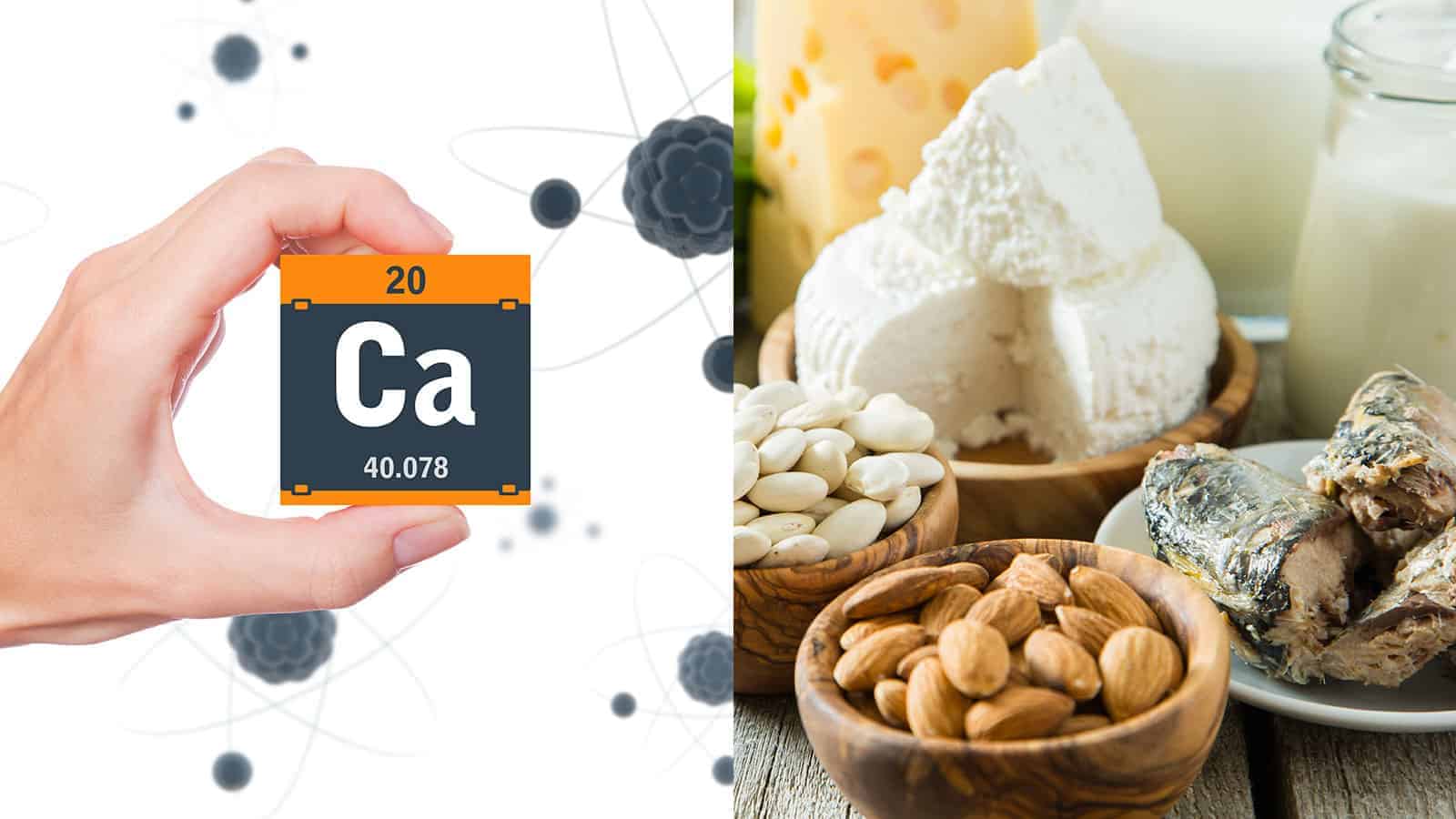Calcium is a nutrient that your body cannot live without. Therefore, it is very important that you ensure you are eating a diet rich with healthy calcium sources in order to keep your calcium levels where they should be. In this article, we go over what calcium is and how it helps your body, and then we give you 15 great foods that you can incorporate into your diet. They will be sure to boost your calcium level, so read on for more!
Why is Calcium so Important?
We have all heard that calcium makes for strong bones. If you are not getting enough calcium, you may be at an increased risk for osteoporosis, bone fractures and breaking, and a lower bone mass. For complete information on healthy calcium levels, visit this site.
But did you know that calcium accounts for up to 2% of your total body weight? It is true! And, calcium is also necessary for proper heart functioning, strong and healthy muscles, and nerve functioning. Not to mention, it is critical for getting the blood to clot. Seeing as it is so important to have healthy calcium levels, take a look below for a list of foods that you can include in your diet in case you do need to boost your calcium level intake.
Calcium Comes in Many Forms
So many people are eating very different foods, and nonetheless are able to stay healthy. This is primarily due to balance, and food in moderation. Ever wonder how a vegan can run 10 miles and still be strong and lean? Just like complete amino acids and protein can come from different sources, calcium can too. Calcium is in almost all foods, but there are some foods with higher amounts than others. Therefore, if you are already eating a healthy diet, rich especially in the foods listed below, chances are you do not need to focus on foods that boost your calcium. But, if you are trying to adjust your diet and still make sure you are getting all of your nutrients, you may want to especially focus on foods high in calcium.
We have listed fifteen foods that are suitable for just about any diet and lifestyle.
Yogurt
There are a lot of different types of yogurt, but if you want to eat yogurt for your calcium levels, go with the low fat version. This is because it offers 45% of your RDI whereas the plain offers just 30%. Yogurt can go well in smoothies, with granola, instead of ice cream, on pancakes and toast, or in baked goods. Just be sure to watch the sugar content!
Sardines and Canned Salmon
The reason these are so high in calcium is because of the bones, which are edible when canned. Sardines offer 35% and canned salmon (with the bones!) packs 21% of your recommended dietary intake. Top a salad or a sandwich off and you are good to go.
Amaranth and Quinoa
Amaranth and amaranth leaves contain 12% and 28%m respectively. So maybe mix the grains in with your oatmeal or rice for a healthy take when you boost your calcium. You can eat the leaves in soups and salads, just like other lettuce leaves.
Beans and Lentils
This is a great option for plant-based eaters. Beans range in different levels, but one cup of winged beans have 24% and white beans have 13%. Other beans and lentils are anywhere from 4-6% per cup. Luckily, beans are easy to incorporate into many meals like soups, hummus, and rice dishes. You can even get bean or lentil flour for making breads and baked goods.
Almonds
This is a great source of calcium if you are big into snacking. Once ounce, or 22 almonds has 8% of your RDI. Coat them in chocolate, top on your oatmeal, put slivers on your ice cream or salads. The options are endless! Out of all the other nuts out there, almonds are the highest in calcium.
Seeds
While you might not think that these tiny pieces of food are powerful, some do certainly pack a punch. Chia, celery, poppy, and sesame are just four seeds that are high in calcium. For example a tablespoon of sesame has 9% of your recommended dietary intake, and chia has 18%.
These are easy to incorporate into your diet. Sprinkle them on top of oatmeal, cookies, or your nut butter. They can also go on top of bread, avocado, and salads and sandwiches. If you put salt and pepper on something, chances are you can also load up on seeds!
Whey Protein
One reason why dairy milk is credited with high calcium is due to the whey protein found it it. One ounce of whey protein about 20% of your recommended dietary intake, so you can have the calcium without the milk if you so choose.
Leafy Greens
Dark leafy greens can be high in calcium. But, in order to boost your calcium, you want to make sure you are eating leafy greens that are low on oxalates. Oxalates make it more difficult for your body to absorb calcium. So, choose greens like kale, collard greens, and bok choy to boost your calcium without making your body have to work extra hard. You can put leafy greens in salads, soups, on sandwiches or in smoothies. Or, you can snack on a leaf whenever you get hungry.
Rhubarb
This is another vegetable that packs a punch. Unfortunately, it is also high in oxalates. Still, your body is able to absorb around 25%, which is roughly 87mg/cup. This would be a good vegetable to cook instead of your potatoes! Mash them up just the same and you will never know the difference, but your bones will.
Fortified Foods
There are some foods, such as cereal and flour, that are fortified with calcium. If all else fails, these are great options available. For instance, some cereal can produce 100% of your RDI, though it is recommended to not eat all your calcium at once, and it is best to get your calcium from a host of different food and drink sources.
Quinoa is also a great source of calcium, not to mention, it has numerous other health benefits. Both quinoa and amaranth are gluten free, which make them ideal for people with celiac disease or who are gluten intolerant or sensitive.
Edamame and Tofu
Here is another great option for plant based eaters: edamame gives 10% per cup, and tofu can give up to 86% in just half a cup! This is especially the case if it has been prepared with calcium. Edamame and tofu are both soy products, so if you are soy sensitive, you will want to opt for another calcium-rich option.
Figs
Here is one you may not have considered: figs. If you like to eat a lot of fruit, and you need to boost your calcium, choose figs. Just two dried figs have more calcium than any other dried fruit at 5% of your RDI. You can eat them as a snack, or put them in smoothies or cereals, or even on top of salads.
Fortified Drinks
Here is another fortified option on the menu. Fortified drinks are a great source, especially if you are on the run.
Just one cup of cup fortified soy milk has 30% of the RDI. Fortified almond milk can offer up to 25%, and even orange juice, fortified with calcium, can provide as much as 50% of your RDI per cup. Next time you want to make popsicles, pick the fortified OJ.
Almond milk is a great drink to incorporate into many different meals. You can use it for baking, smoothies, drinking plain, in coffee and tea, for making yogurt, cheese, and ice cream, and much more. It is also a great alternative for those who are avoiding dairy milk.
Milk
Milk has achieved the reputation of being a great source of calcium. At around 31% of your RDI, this might be a really good and affordable way for you to get your calcium. Put it in smoothies, cereal, oatmeal, soups, tea, coffee, or drink a glass. As long as you are not lactose intolerant, and can stomach the other rumors that dairy milk, this is a sure way to get some calcium in your system.
Cheese
Sometimes, lactose intolerant people have a more difficult time meeting their calcium levels. This might be because they do not drink milk (or milk alternatives). Luckily, there are some cheeses high in calcium but with low lactose content, like hard and aged cheeses. Your best for highest calcium though is Parmesan with 33% of your recommended dietary intake.
Conclusion
All in all, calcium is an essential nutrient and mineral that is vital to keeping your body in strong working condition. Without calcium, your bones will weaken maybe even to the point of fracturing and breaking. Especially if you are an athlete, you will want to make sure that your calcium is where it should be. Luckily, it is easy, tasty, and even fun to include calcium in your everyday diet. Allow yourself to get a little creative. Maybe you will make your oatmeal with almond milk and top with figs, sliced almonds, and chia seeds. Maybe you will just have that bowl of ice cream because it has benefits after all. Just be healthy and be aware!


















